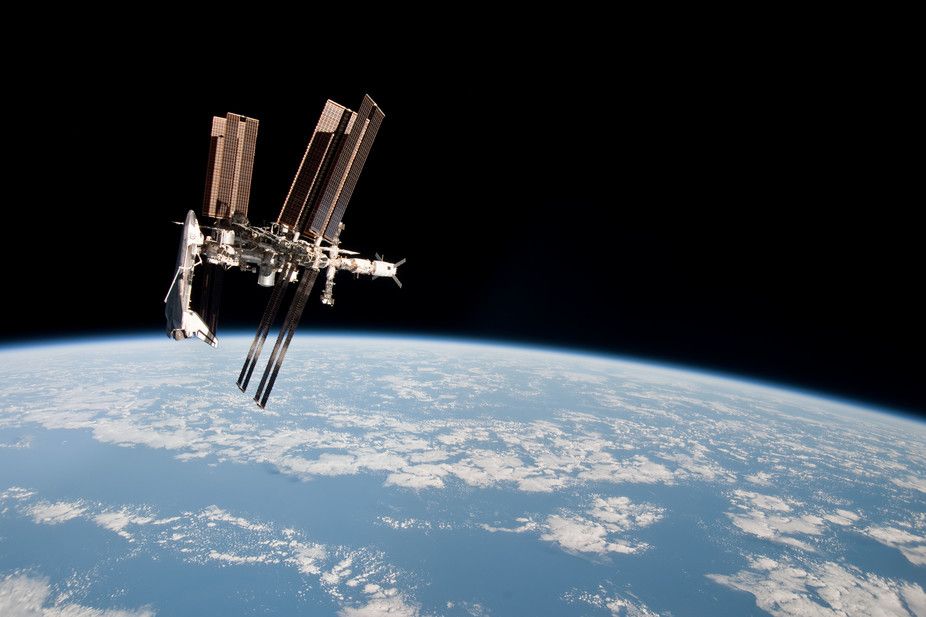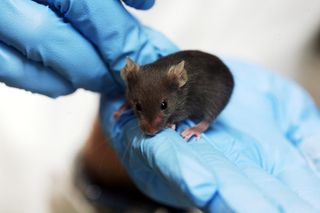
Space Babies: Study Suggests Humans May Be Able to Have Healthy Offspring in Orbit

This article was originally published at The Conversation. The publication contributed the article to Space.com's Expert Voices: Op-Ed & Insights.
When we think about the difficulties of colonising another planet, the last thing we probably worry about about is sex. However, for our species to survive beyond Earth it's a fundamental issue. While no astronauts have admitted having sex in space, plenty of reproduction has been going on.
This is because a range of animals from fruit flies to fish – as well as their eggs, sperm and embryos – have been sent into space so we can study how they reproduce. While these studies indicate that the first stages of reproduction in space are possible, other research suggests that lower gravity may slow down the development of the embryo.
Many of these studies have been based on IVF using sperm and eggs in orbit. Embryos and already pregnant animals have also been sent to space. However, we have yet to see the entire process of an animal in space getting pregnant, going through a normal pregnancy and having healthy babies up there, so there is still a long way to go.
Of particular interest to space agencies, astronauts and scientists are the effects of radiation on reproduction. Space is full of highly energetic particles which can damage our DNA. On Earth, thanks to our atmosphere, our exposure to this type of radiation is about 100 times lower than at the International Space Station (ISS). Now a new study, published in PNAS, has investigated the effects of space radiation on male reproduction by blasting mouse sperm up to the ISS.
The first issue for the researchers was how best to get the sperm up there. They decided to have the sperm freeze-dried, just like instant coffee. This meant the sperm weighed almost nothing and could be kept at room temperature, ideal for travel on a rocket, or a distant planet. The mouse sperm then spent 288 days on the ISS before coming back to Earth to be compared with fresh sperm from the same mice.
First the scientists analysed how space travel affected the integrity of the DNA within the sperm. We know that high levels of fragmentation of sperm DNA is associated with male infertility. As expected, the scientists discovered that the space sperm had higher amounts of fragmented DNA than the sperm which had stayed on Earth. However, when used to fertilise a mouse egg, the space sperm resulted in a similar number of healthy embryos being generated – and these offspring had the ability to develop into normal, fertile adult mice. A final test the researchers did was to compare the patterns of genes being expressed within the brains of the adult mice. Here, the researchers saw no overall differences and concluded the space sperm were equally capable of generating offspring.
Get the Space.com Newsletter
Breaking space news, the latest updates on rocket launches, skywatching events and more!
The minimal effect on fertility in these highly controlled studies seems to match observations on the fertility of astronauts coming back from space. However, this is the first study to look directly at how space travel damages sperm.
So it seems short-term space travel is OK for sperm quality. It somehow seemed that the damaged space sperm was "repaired" when fertilising the egg, which was from young, healthy mice. This suggests eggs can compensate for sperm of poorer quality, mending damaged DNA and ensuring the development of the embryo. However, it would be interesting to see whether eggs, which have been into space, would also mend poor quality sperm just as well.

Indeed, if humans are to colonise another planet, both men and women will be needed. Another factor to think about is age. With increasing age comes increasing DNA damage to our cells. Unfortunately, as eggs age, their ability to repair damaged DNA, either their own or that of the sperm, decreases. Therefore, more studies are needed into how space travel affects both male and female reproduction, and whether age is a significant factor in reproductive success.
Radiation damage
During space travel, it is essential to shield the body from harmful cosmic radiation. If damaged DNA is not repaired properly, it can increase our chances of developing cancer. This is why we wear sun cream here on Earth, to block out the harmful UV rays that could increase our chance of skin cancer. Similarly, exposure to highly radioactive materials results in radiation sickness and increased rates of cancer.
As such, it would seem sensible to minimise our own exposure to radiation, and that of our sperm and eggs, as much as possible. While everyone agrees that very high level radiation exposure is harmful, the jury is less convinced on exposure to lower doses of radiation, such as those suffered at the ISS. There is a small number of scientists who believe that exposure to low dose radiation could actually help our bodies to repair damaged DNA.
Indeed, studies in mice have shown that exposure to low dose radiation protects them from subsequent exposure to higher doses. Similarly, exposure of pregnant mice to the levels of radiation experienced by people around the Chernobyl reactor did not harm their unborn offspring. In fact, as adults, they were more resistant to the damaging effects of high level radiation.
While studies have shown that the fundamental aspects of reproduction are possible in space, there are still many steps to take. These include fertilisation, embryo implantation, foetal development and, of course, giving birth. Studies that sent pregnant rats to space to give birth found that they had twice as many contractions as rats on Earth.
While sex in space has not been high on the priority list for NASA, the survival of the human race could well depend on us getting a better understanding of how to reproduce in zero gravity.
Adam Watkins, Research Fellow, Cell and Tissue Biomedicine, Aston University
This article was originally published on The Conversation. Read the original article. Follow all of the Expert Voices issues and debates — and become part of the discussion — on Facebook, Twitter and Google +. The views expressed are those of the author and do not necessarily reflect the views of the publisher. This version of the article was originally published on Space.com.
Join our Space Forums to keep talking space on the latest missions, night sky and more! And if you have a news tip, correction or comment, let us know at: community@space.com.













